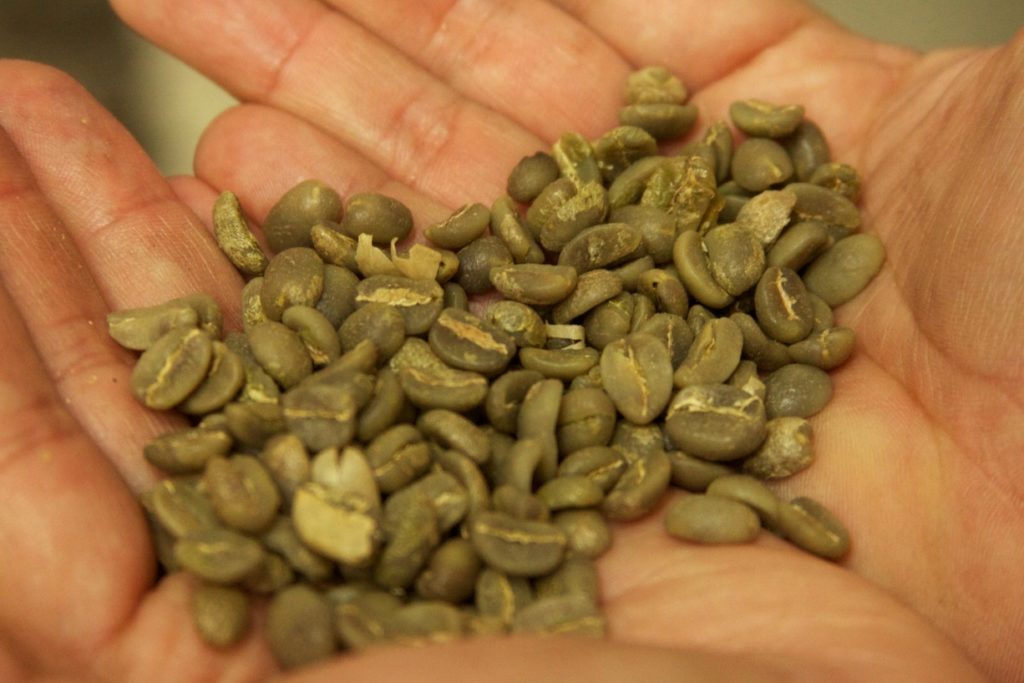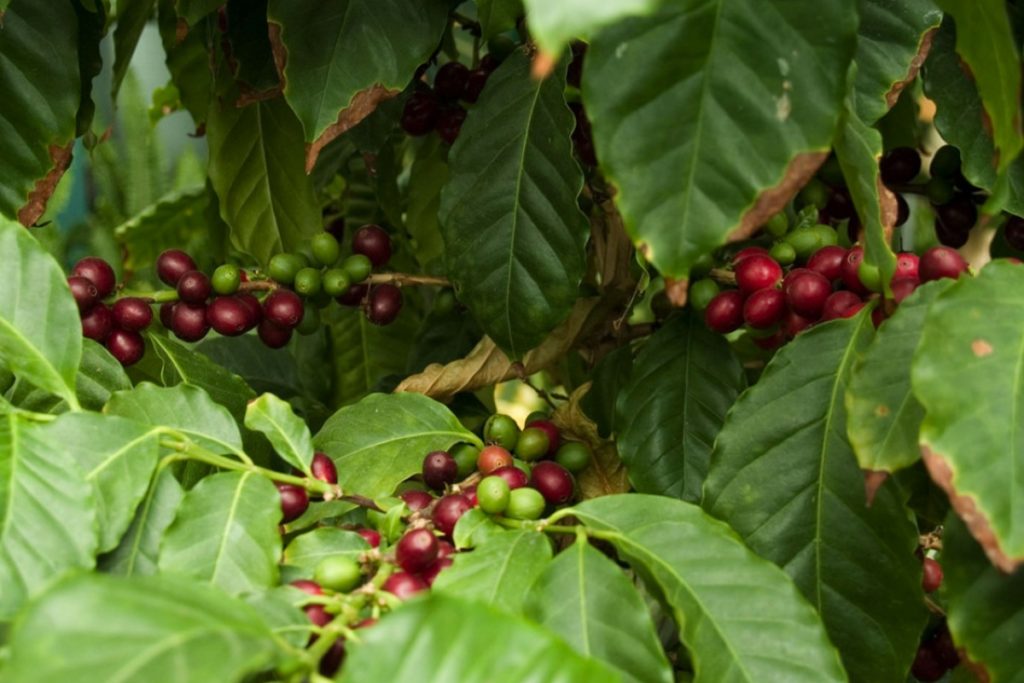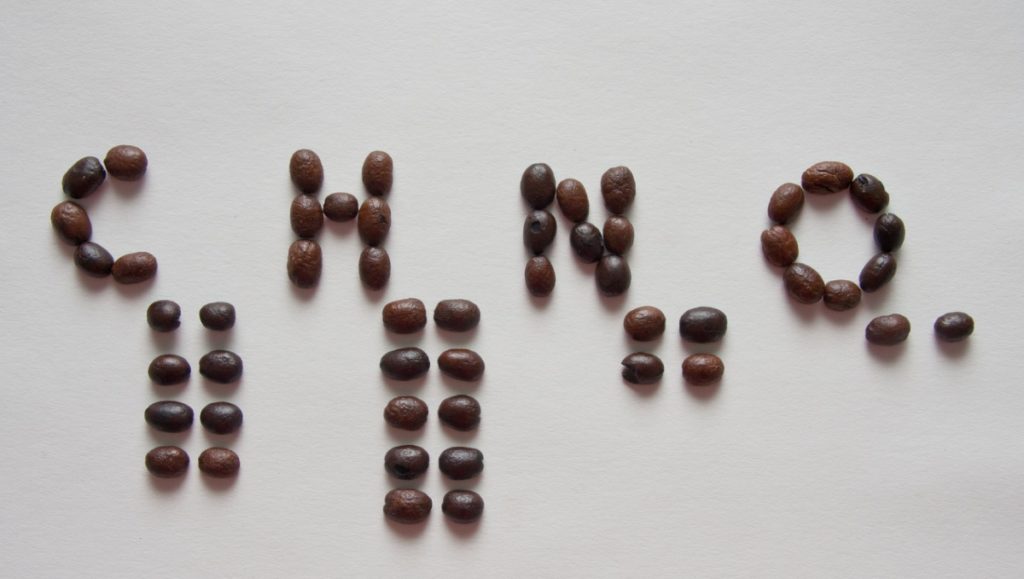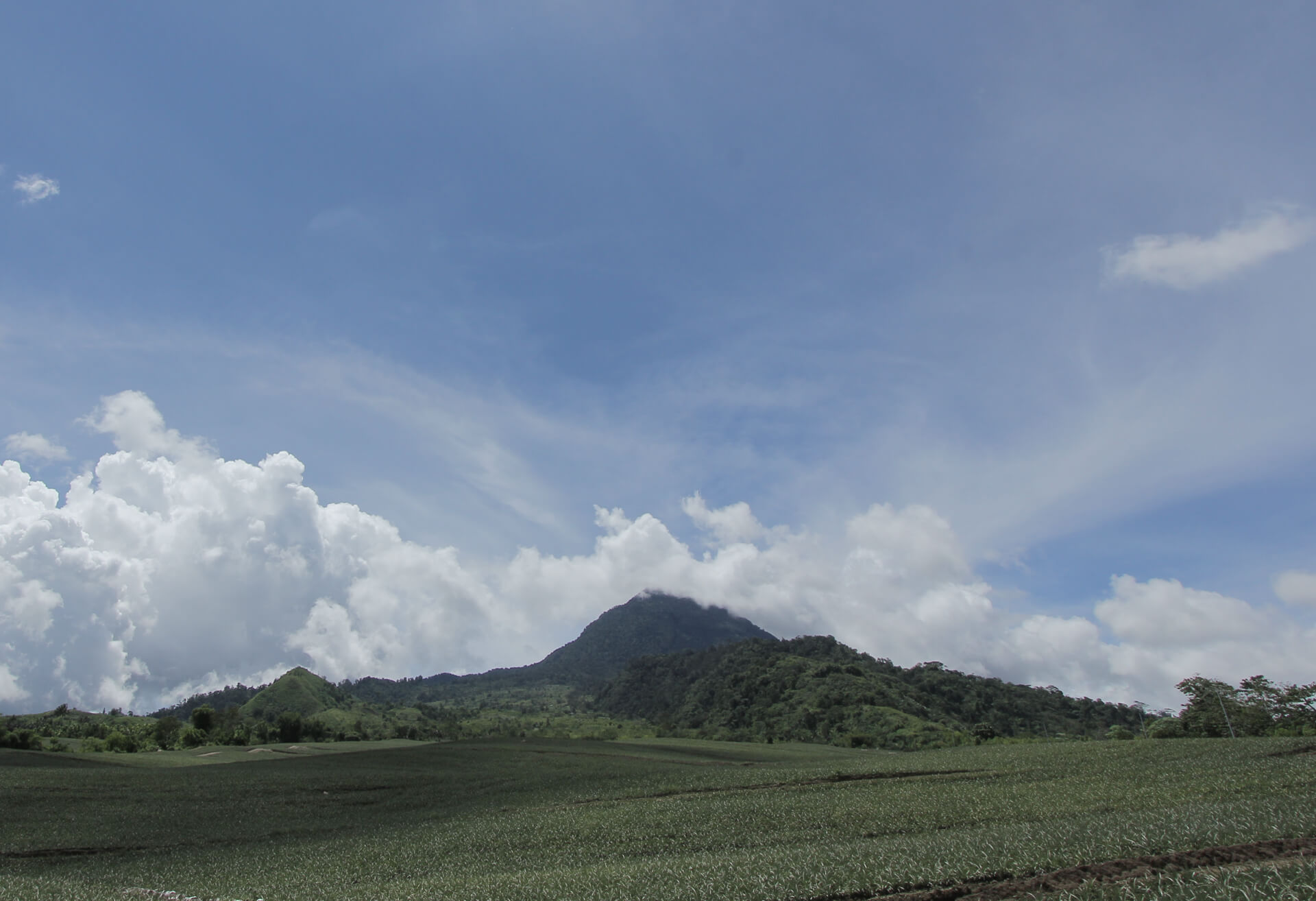Have you ever wondered whether you can you eat coffee beans? The short answer is yes, eating them is not just for Civet cats! Human beings were eating coffee beans as an energy boost long before we discovered the fine art of brewing. They’re also naturally low in calories (that’s the bean itself, not the chocolate-covered version). The long answer is, “Yes, but…”
Is it safe to eat raw, unroasted coffee beans? Yes, although you may not like the taste. Raw, or green, coffee beans are highly acidic and are said to have a “grassy” or “woody” flavor. They are much harder than roasted beans, making them difficult to chew. When you process a coffee bean, then the darker the roast, the softer that the beans will become.

Colombian Raw Green Coffee Beans Photograph by McKay Savage [https://www.flickr.com/photos/mckaysavage/] from Colombia under CC licence.
When you drink a cup of coffee you are only drinking the part of the coffee bean that have made it through the filter. When you eat a whole coffee bean, there is no filter. So, not only are you getting the full dose of caffeine that you get in your drink, but you’re also getting substances in the whole bean that would normally end up in the coffee grounds.
Catechols and Antioxidants
In addition to caffeine, coffee beans contain catechols. These organic compounds have been known to increase the amount of acid in the stomach. Increased stomach acid can be a cause of heartburn and numerous other health related problems.
On a more positive note, coffee beans contain more antioxidants than a typical cup of coffee does. Coffee is America’s #1 source of antioxidants. Antioxidants are linked to cardiovascular, immune system, and cognitive health as well as cancer prevention, so generally the more antioxidants you have in your diet, the better.
Roasting, unfortunately, destroys some of the antioxidants that naturally occur in a green state coffee bean. According to Dr. Daniel Perlman of Brandeis University [Researchscientists/Perlman.html], dark roasts of coffee have “almost no antioxidant left.” However, because of their rather unpleasant taste and rock-like hardness, unroasted coffee beans are unlikely to become a food favorite any time soon. In addition, the process of shipping them around the world can expose the green beans to mold and bacteria, which the roasting process typically destroys.
Perlman’s solution to the problem was to create par-baked coffee flour. Milled at very cold temperatures to help prevent oxidation, this flour made from unroasted coffee beans does not taste much like the coffee beverage we all know and love. Instead, it’s described as having a “mildly nutty” taste. The gluten-free flour can be mixed with wheat flour to create baked goods with a potent antioxidant punch.
Coffee Flour Confusion
Dan Belliveau, formerly an engineer at Starbucks, has also created a product called “Coffee Flour” [http://www.coffeeflour.com/] that differs dramatically from Perlman’s nutty, green coffee concoction. Belliveau’s product is made from the coffee “cherry,” the fruit of the coffee plant that contains the seed we commonly refer to as the coffee bean [http://blog.ted.com/what-is-coffee-flour/].

Coffee Cherries photograph by Larry Jacobson [https://www.flickr.com/photos/ljguitar/] under CC licence.
Caffeine
Eating coffee beans causes your body to absorb caffeine faster. Caffeine makes us feel more awake and alert by blocking the hormone adenosine. Adenosine makes us feel drowsy and is also linked with the perception of pain, specifically pain related to muscle inflammation, the kind we feel after over-exerting our muscles. Caffeine has been shown to decrease the perception of muscle soreness after exercise, according to a University of Georgia [http://www.uga.edu/] study.
The caffeine in coffee beans also stimulates contractions in the bowels, so eating them may have a mild laxative effect. Even decaffeinated coffee beans seem to work as a laxative. This effect makes a good case for moderation when eating coffee beans.

Caffeine roasted coffee beans photograph by Greg Rodgers [https://www.flickr.com/photos/gregrodgers/] under creative commons licence
Studies of concentrated green coffee bean extract, which looked at green coffee as a potential treatment for high blood pressure and aid to weight loss, have also noted some additional side effects of caffeine. Participants in these studies reported increased heart rate and breathing, irregular heartbeats, nausea, vomiting, agitation, ringing in the ears, and anxiety [http://www.webmd.com].
Caffeine can exacerbate the symptoms of anxiety disorders. People who are pregnant or breast feeding, or who have osteoporosis, irritable bowel syndrome, or certain other conditions should be careful about consuming excess amounts of caffeine. If you have any questions about how much caffeine is safe for you to consume, it’s always best to consult with a healthcare professional.
In Conclusion
In general, you can eat coffee beans, whether in their raw or roasted form or ground into flour and baked into your morning muffin. Whichever coffee bean form you choose, just don’t overdo it, well feel free to drink as much Kopi Luwak as you like. If you enjoyed this article then you may also be interested on our advice on how to grind coffee beans without a grinder, in our infographic on coffee, our guide on how to make coffee without coffee maker, our advice on how to store whole coffee beans, and our article on the history of coffee in the Middle East.
